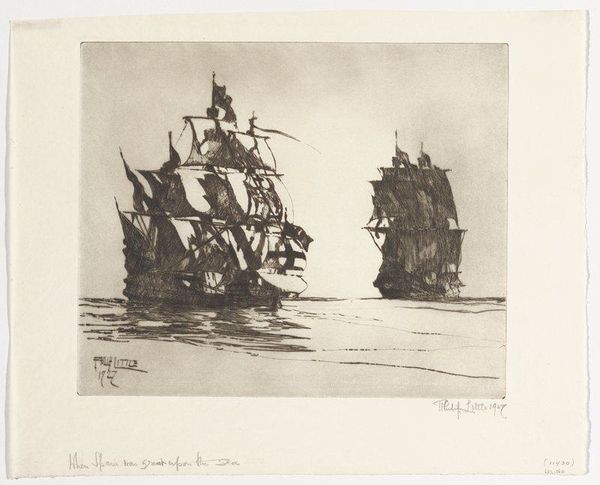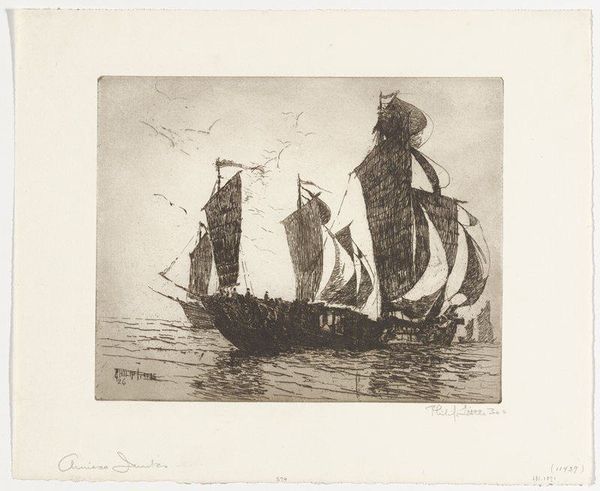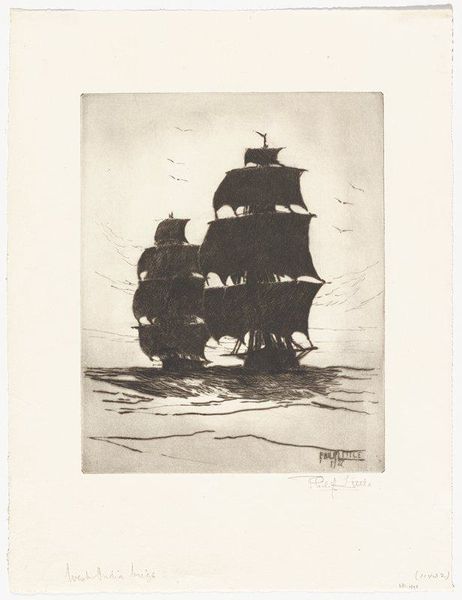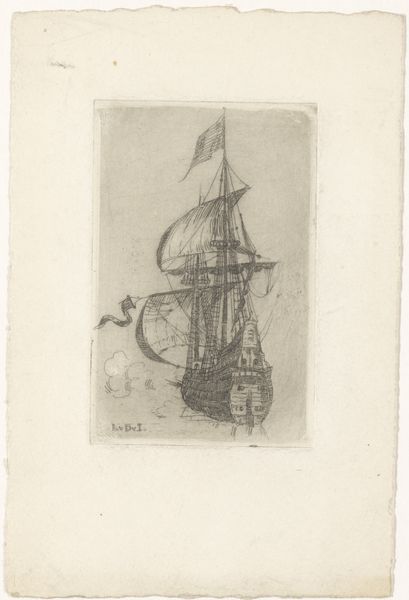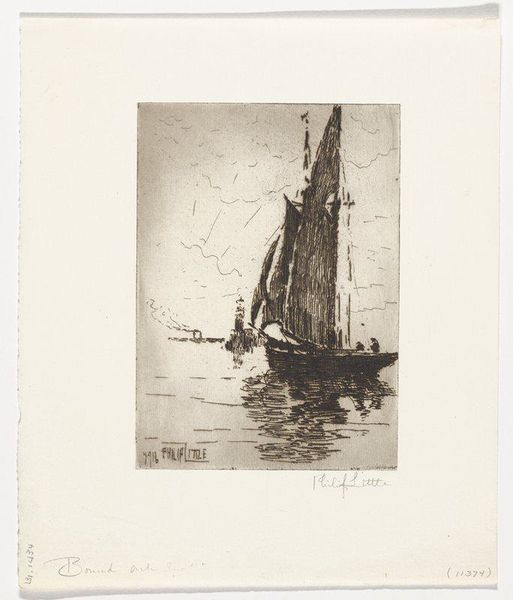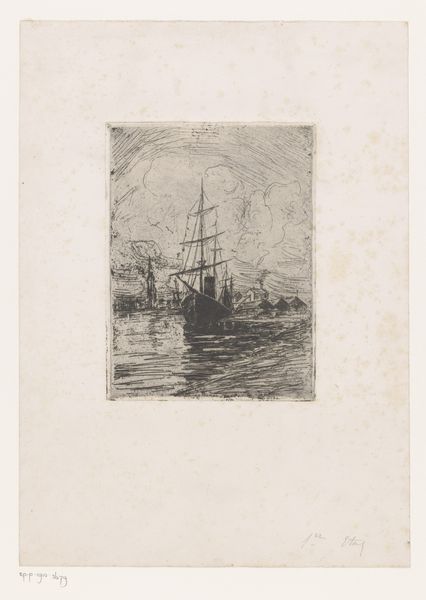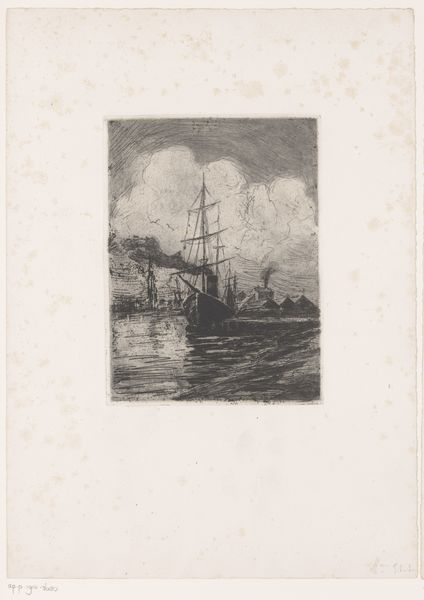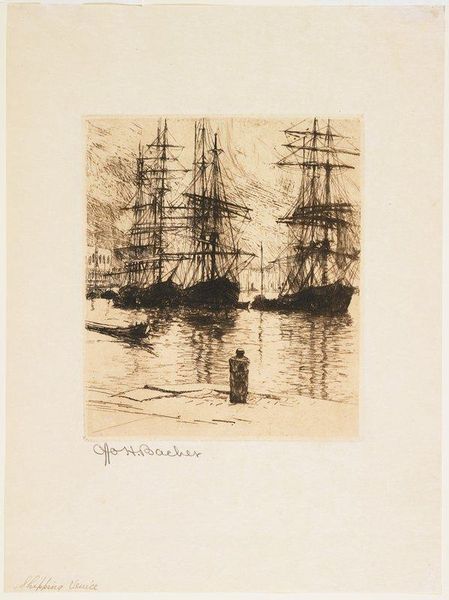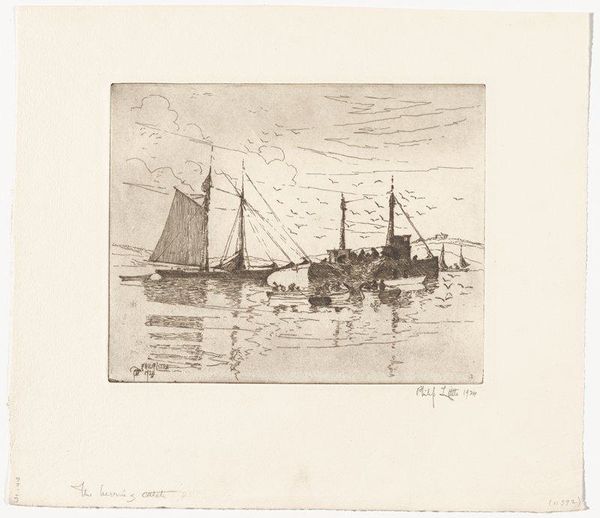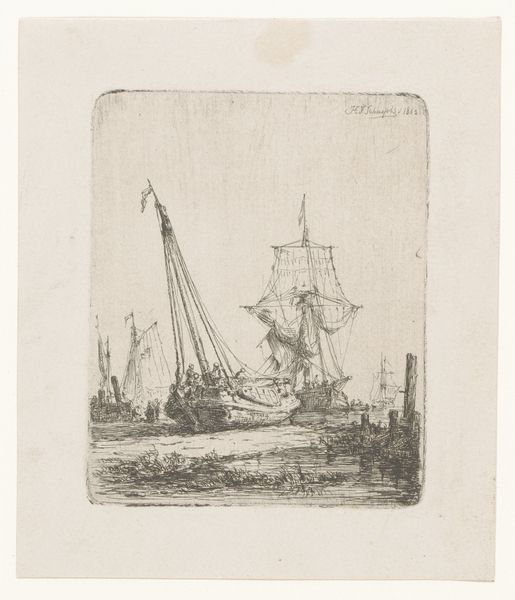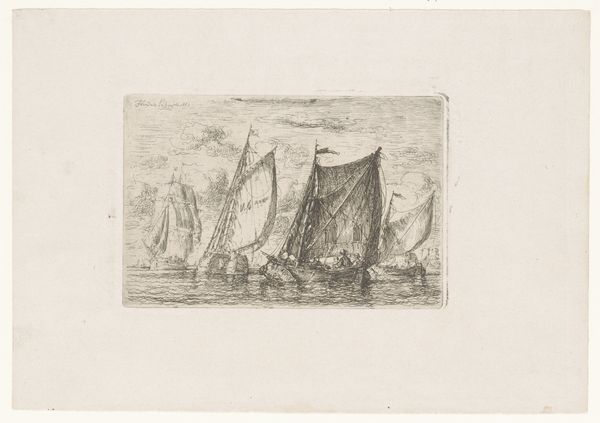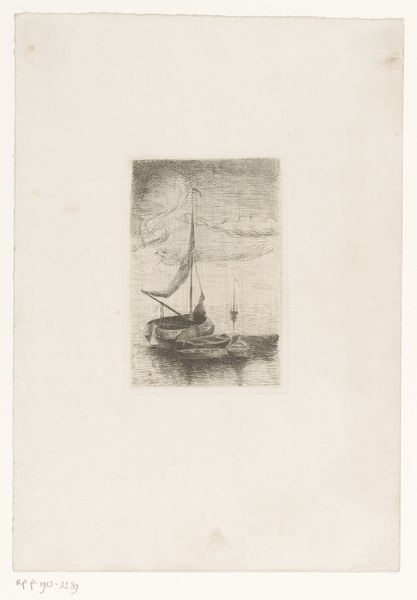
print, etching
#
photo of handprinted image
#
light pencil work
#
ink paper printed
# print
#
etching
#
pencil sketch
#
old engraving style
#
ink colored
#
united-states
#
sketchbook drawing
#
watercolour illustration
#
botanical art
#
watercolor
Dimensions: 9 7/8 x 7 7/8 in. (25.08 x 20 cm) (plate)15 3/16 x 13 3/8 in. (38.58 x 33.97 cm) (sheet)
Copyright: No Copyright - United States
Curator: What a wonderfully evocative print. This is "The Spanish Galleon," an etching by Philip Little, created in 1916. It currently resides here at the Minneapolis Institute of Art. Editor: Somber. Almost haunting, with that looming dark ship and the distant echo of another. The restricted tonal range certainly amplifies the dramatic effect. Curator: It's fascinating to consider Little’s choices of etching as a medium for this maritime scene. The marks, the lines... they speak of labor, of the hand involved in the meticulous rendering of each sail and wave. Remember, printmaking in this era was undergoing significant changes with the rise of industrial printing. This piece seems to consciously harken back to an older craft. Editor: Yes, the graphic quality is quite striking. Observe how Little uses closely packed lines to create dense shadows, giving the galleon a real sense of weight and presence. And then the delicate, almost skeletal rendition of the distant ship… structurally it functions as both a compositional element and a counterpoint in mood. Curator: The image resonates with its time. 1916, World War I raged in Europe, a time of shifting global power dynamics and burgeoning nationalism. Galleons themselves signify colonial ambition, the movement of goods and power... possibly pointing to America's growing naval power in relation to fading empires? Editor: The light, too, contributes to the somberness, creating an unsettling, almost apocalyptic vision. The lack of color simplifies and enhances the stark visual structure of ship against sea and sky. It creates a feeling of something lost and distant. Curator: Little was part of a thriving artistic community at the time, so access to materials and artistic exchange would have been common. The rise of mass production techniques actually led to some artists exploring printmaking and other traditional methods as ways to preserve craft-based skills and production values. Editor: And the contrast does leave us with this haunting and thought-provoking composition. The longer I look, the more its semiotic potential grows. Curator: Absolutely. It offers us a window into artistic concerns with labor, production and national identity at a particular moment in history. Editor: It all builds towards something uniquely timeless despite its grounding in specific events.
Comments
No comments
Be the first to comment and join the conversation on the ultimate creative platform.
